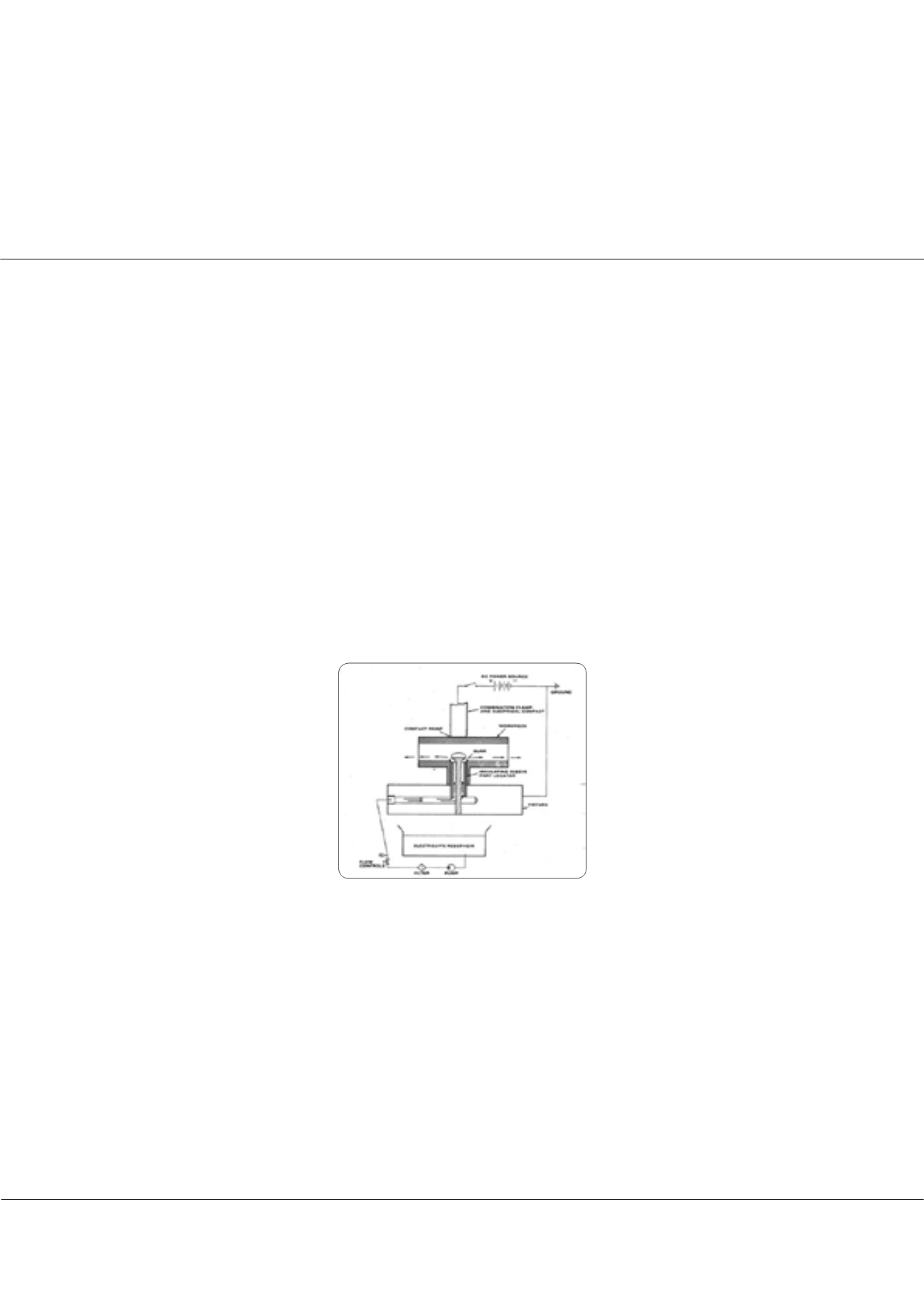

Page 93
conferenceseries
.com
Volume 7
Biosensors Journal
ISSN: 2090-4967
Electrochemistry 2018
June 11-12, 2018
June 11-12, 2018 | Rome, Italy
4
th
International Conference on
Electrochemistry
Experimental investigations of ECD process parameters
Harsh Thakkar, Alay Patel, Satisha Prabhu, Abhishek Kumar
and
Vishvesh Badheka
Pandit Deendayal Petroleum University, India
Statement of the Problem:
A rapid increment in demand of highly accurate, repeatable finishing process for high value added
applications, like aerospace and automotive, has led to the development of technologies like electrochemical deburring (ECD).
Thus, it is of utmost importance to evaluate and optimize the performance of ECD process. This study is focused on evaluation
of ECD process by comparison of material removal rates and maximum current obtained by variation in process parameters
like machining time, electrolyte concentration.
Methodology & Theoretical Orientation:
The paper mainly aims to evaluate the performance of electrochemical deburring
process by varying certain process parameters during the deburring of internal holes. These parameters include the cycle time,
electrolyte type, electrolyte concentrations. The results are obtained by a comparative study of several experimentations and
characterization of the deburred area.
Conclusion & Significance:
The analysis of ECD process helps to obtain the optimum value of parameters that is essential to
increase the productivity of industries that require deburring of components. Deburring of internal geometries can be done
by various processes like hand deburring, honing, abrasive jet machining etc. but all these processes do not ascertain specific
spatial control over the deburred area, which is possible with electrochemical deburring. Hence, it is important to evaluate the
performance of ECD and also to check the economic viability of the process.
Figure 1:
Electrochemical machining process schematic.
Recent Publications:
1. In Hyu Choi and Jeong Du Kim (1998) A study of the characteristics of the electrochemical deburring of a governor-
shaft cross hole. Journal of Materials Processing Technology 75(1-3):198–203.
2. Lee E S, Won J K, Shin T H, et al. (2012) Investigation of machining characteristics for electrochemical micro-
deburring of the AZ31 lightweight magnesium alloy. Int. J. Precis. Eng. Manuf. 13(3):339-345.
3. Mount A, Eley K and Clifton D (2000) Theoretical analysis of chronoamperometric transients in electrochemical
machining and characterization of titanium 6/4 and inconel 718 alloys. Journal of Applied Electrochemistry 30(4):447-
455.
4. S K Sorkhel and B Bhattacharyya (1994) Parametric control for optimal quality of the work piece surface in ECM.
Journal of Materials Processing Technology 40(3-4):271-286.
5. H Hocheng, Y H Sun, S C Lin and P S Kao (2003) A material removal analysis of electrochemical machining using
flat-end cathode. Journal of Materials Processing Technology 140(1-3):264–268.
Harsh Thakkar et al., Biosens J 2018, Volume 7
DOI: 10.4172/2090-4967-C1-002
















